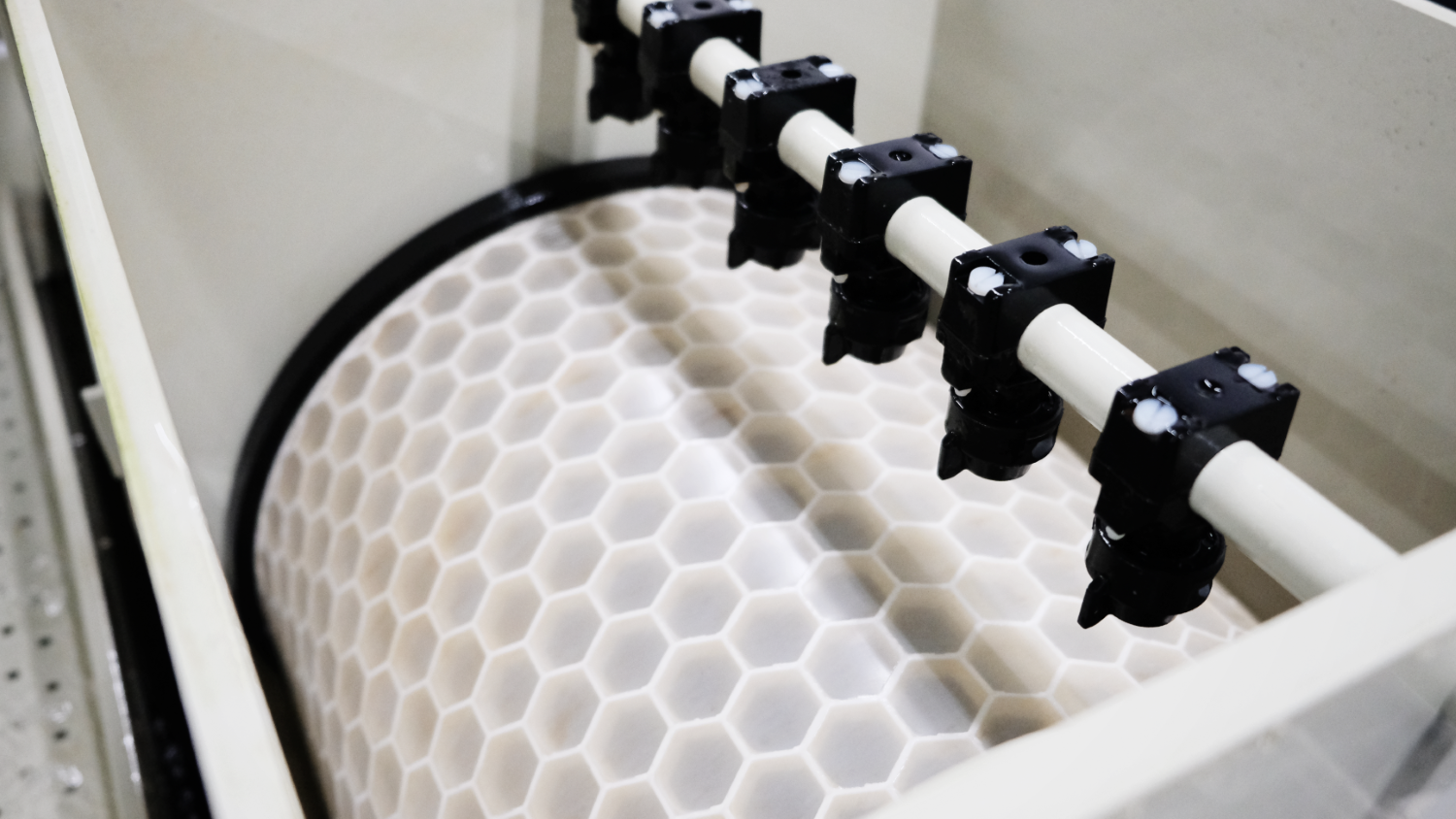Waterborne feeding systems are being increasingly adopted in traditional farming and now also in closed aquaculture systems (CAS). They offer efficiency—but they also introduce a unique set of challenges that can compromise feed delivery and fish nutrition if not managed properly.
Navigating the complexities of waterborne feeding

At Skretting, our goal is to ensure that what goes into the system reaches the fish in optimal condition -- delivered at the right depth, structurally sound, nutrient rich – and ready to be consumed.
We’re actively working on solutions that address every stage of the waterborne feeding journey—because the path from silo to fish is more complex than it looks. Here’s three interesting facts about waterborne feeding.
1. Why waterborne feeding makes slow-sinking feed a challenge
In waterborne feeding systems, pressure plays a critical—but often overlooked—role in feed performance.
- Pump pressure: To transport feed through hoses and deliver it below the surface, pumps generate significant pressure. This pressure can force water into the pellets, increasing their density and causing even slow-sinking or floating feeds to sink more quickly.
- Depth matters: The behavior of a pellet on the surface isn’t the same as at 30 meters depth. As pressure increases with depth, it further impacts feed buoyancy.
The result? Maintaining consistent slow-sinking behavior becomes extremely difficult—especially with fluctuations in pump pressure.
For feed to perform as intended, understanding and controlling pressure in waterborne systems is key.
2. Sampling feed in waterborne systems: Easier said than done
Sampling isn't simple. Evaluating how feed behaves in waterborne feeding systems involves much more than just scooping up a few pellets. In a waterborne feeding system, the system is not only transporting water, but it transports feed in water. Pressure, depth, system variability, they all influence the feed’s characteristics. What you see at the surface may not reflect what is happening in the water pipes or underwater. Simulations will give good indications, but not the full picture. Understanding feed performance in waterborne feeding systems involves thousands of data points from laboratory simulations and analyses concurrently to feed collection on sites. The sampling from waterborne feeding is most of the time performed under special circumstances, such as sampling at 20 meters deep.
To make informed decisions in aquaculture, we need to account for the complexity of the environment—not just the composition of the feed.
3. Water: The unseen force in waterborne feeding
In aquaculture, we often focus on the feed. But in waterborne systems, it's actually the water that plays the dominant role.
Water is more than a carrier—it’s a powerful, dynamic force. As feed travels through a waterborne system, it’s exposed to pressure, turbulence, drag, and time. Each of these can affect the physical integrity and nutritional value of the pellets.
The challenge?
- Preventing nutrient loss
- Minimizing pellet breakdown
- Ensuring what goes in is what reaches the fish
Designing feed that can withstand the journey is just as important as its formulation.
Thorough research is at the heart of everything we do, and waterborne feeding is no exception. We are committed to continuous learning and have gained substantial knowledge in producing feed that meets the unique challenges of waterborne feeding systems.
